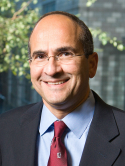A 20-year experience with 202 segmental mandibulectomy defects: A defect classification system, algorithm for flap selection, and surgical outcomes Journal Article
| Authors: | Cordeiro, P. G.; Henderson, P. W.; Matros, E. |
| Article Title: | A 20-year experience with 202 segmental mandibulectomy defects: A defect classification system, algorithm for flap selection, and surgical outcomes |
| Abstract: | BACKGROUND: This study establishes a novel and broadly applicable defect classification system and flap selection algorithm for segmental mandibulectomy defects that emphasize the importance of the soft-tissue deficit, in addition to that of the bony defect. METHODS: Between 1992 and 2011, 202 patients with mandibulectomy defects underwent immediate reconstruction performed by a single surgeon. Details of the bony and soft-tissue defects, recommendations for the most appropriate reconstruction for each clinical scenario, and surgical outcomes are presented. RESULTS: A total of 211 flaps were performed in 202 patients. Forty-one (19 percent) were nonosseous only, and 170 (81 percent) were osseous-containing. The majority of osseous flaps were fibula osseous or osteocutaneous flaps (91 percent), and the majority of nonosseous flaps were vertical rectus abdominis myocutaneous flaps (68 percent). Flap selection was influenced by the number of soft-tissue zones resected; defects of one soft-tissue zone or less were predominantly reconstructed with an osseous flap, whereas defects that involved four or more zones underwent reconstruction with only a soft-tissue flap in 55 percent of cases. CONCLUSIONS: The algorithm for reconstruction of the mandibulectomy defect must include both nonosseous and osseous flaps based on defect size, location, and number of soft-tissue zones involved. As the extent of the soft-tissue defect increases, nonosseous flaps are preferred because of greater reliability of the skin island. The surgical outcomes associated with this algorithm are similar to or better than what is published in the literature. This series represents the largest reported single-surgeon experience with mandibulectomy defect reconstruction. |
| Keywords: | adolescent; adult; child; preschool child; aged; aged, 80 and over; child, preschool; middle aged; reconstructive surgical procedures; young adult; surgical flaps; outcome assessment; algorithms; outcome assessment (health care); algorithm; factual database; databases, factual; procedures; reconstructive surgery; very elderly; humans; human; male; female; mandible osteotomy; mandibular osteotomy |
| Journal Title: | Plastic and Reconstructive Surgery |
| Volume: | 141 |
| Issue: | 4 |
| ISSN: | 0032-1052 |
| Publisher: | Lippincott Williams & Wilkins |
| Date Published: | 2018-04-01 |
| Start Page: | 571e |
| End Page: | 581e |
| Language: | English |
| DOI: | 10.1097/prs.0000000000004239 |
| PUBMED: | 29596191 |
| PROVIDER: | scopus |
| PMCID: | PMC5880317 |
| DOI/URL: | |
| Notes: | Article -- Export Date: 1 October 2018 -- Source: Scopus |
Altmetric
Citation Impact
BMJ Impact Analytics
Related MSK Work






